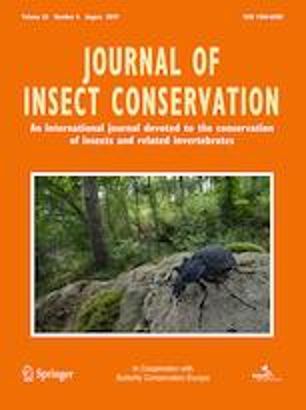Ver ítem
- xmlui.general.dspace_homeCentros Regionales y EEAsCentro Regional Patagonia SurEEA Santa CruzArtículos científicosxmlui.ArtifactBrowser.ItemViewer.trail
- Inicio
- Centros Regionales y EEAs
- Centro Regional Patagonia Sur
- EEA Santa Cruz
- Artículos científicos
- Ver ítem
Potential biodiversity map of darkling beetles (Tenebrionidae): environmental characterization, land-uses and analyses of protection areas in Southern Patagonia
Resumen
Different methodologies had been developed for species management and conservation based on modelling of potential biodiversity at regional scales. However, most of these models were fitted for umbrella species (e.g. big mammals) rather than micro-fauna. Beetles should be included to improve conservation strategies due to their functional roles and vulnerability in arid environments. The maps of potential biodiversity (MPB) based on different potential
[ver mas...]
Different methodologies had been developed for species management and conservation based on modelling of potential biodiversity at regional scales. However, most of these models were fitted for umbrella species (e.g. big mammals) rather than micro-fauna. Beetles should be included to improve conservation strategies due to their functional roles and vulnerability in arid environments. The maps of potential biodiversity (MPB) based on different potential habitat suitability (PHS) maps are useful to indicate high biodiversity areas. Firstly, we aim to elaborate a MPB of darkling beetles (Coleoptera: Tenebrionidae) based on 10 species PHS maps inhabiting Santa Cruz Province (Argentina). Then, we analysed the MPB an environmental gradients and land-use variables. We explored 41 potential variables to develop PHS maps. The MPB was included into a GIS project, and was analysed considering climatic and topographic variables, ecological areas and soil organic carbon (SOC) stock, also sheep density, desertification and protected area network. The modelled showed great variability in their habitat requirements (e.g. temperature), where marginality (PHS differs from the available conditions) and specialization (environmental condition range of PHS) determined three species groups. MPB increased from grasslands in the NE to shrublands in the SE, and was higher with SOC, sheep density and desertification degree. Protection areas included lower MPB for darkling beetles, where provincial reserves have a major conservation role compared with national parks. MPB allowed us to understand the potential trade-offs with the environment and human uses. This gave us a tool to development new strategies (e.g. land-sparing) for management and conservation.
[Cerrar]

Autor
Rosas, Yamina Micaela;
Peri, Pablo Luis;
Carrara, Rodolfo;
Flores, Gustavo Ernesto;
Pedrana, Julieta;
Martínez Pastur, Guillermo José;
Fuente
Journal of Insect Conservation 23 : 885–897 (July 2019)
Fecha
2019-07-23
Editorial
Springer
ISSN
1366-638X
1572-9753
1572-9753
Formato
pdf
Tipo de documento
artículo
Palabras Claves
Derechos de acceso
Restringido
 Excepto donde se diga explicitamente, este item se publica bajo la siguiente descripción: Creative Commons Attribution-NonCommercial-ShareAlike 2.5 Unported (CC BY-NC-SA 2.5)
Excepto donde se diga explicitamente, este item se publica bajo la siguiente descripción: Creative Commons Attribution-NonCommercial-ShareAlike 2.5 Unported (CC BY-NC-SA 2.5)

